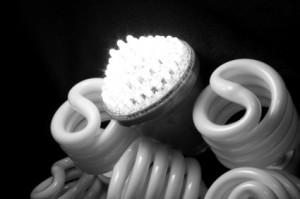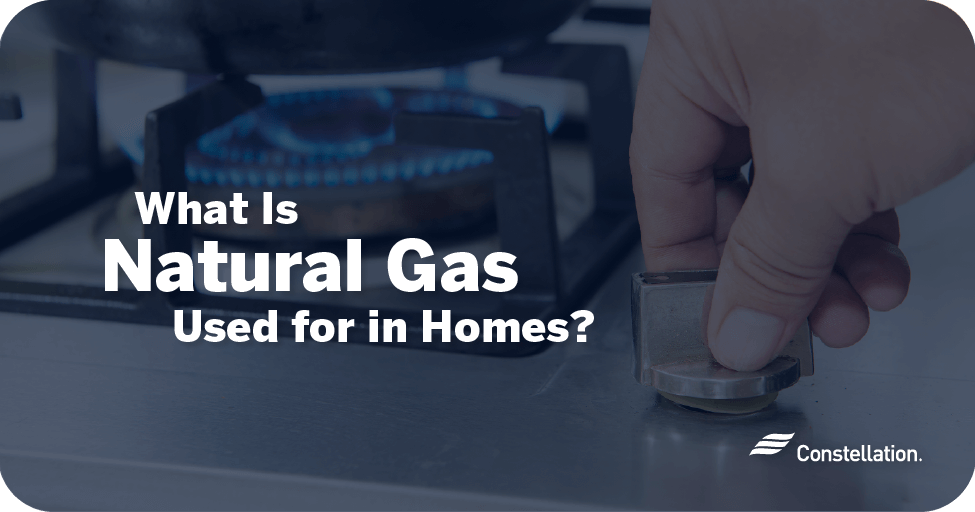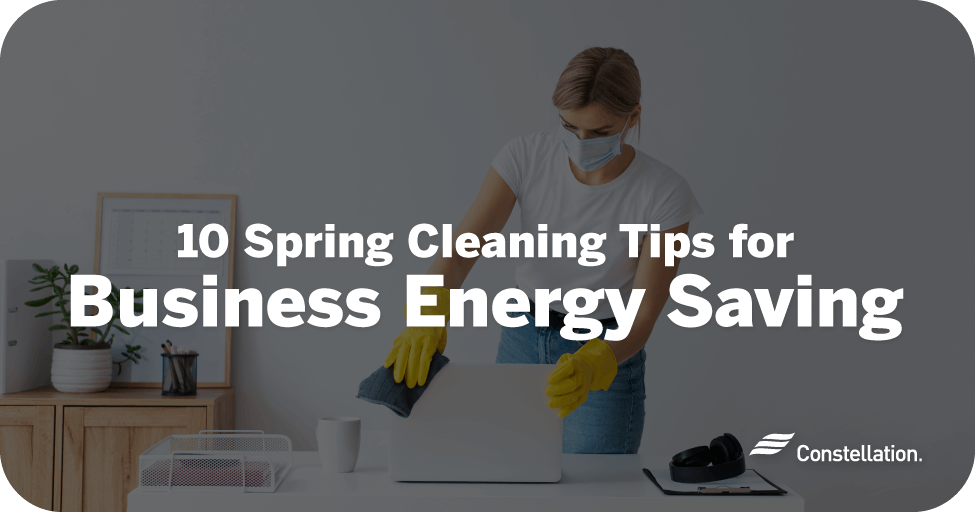
- Category:
Home Energy Savings - Published:
November 15, 2012 - Updated:
September 8, 2021
Reviewing the Wonders of Lighting
Over the course of this past month, we published a series of blogs that provided information on energy efficient lighting, best practices for lighting design, proper lighting disposal, and the benefits of certain kinds of light bulbs. Below is a summary of each lighting blog we published.
Navigating the Labyrinth of Light Bulb Choices
Incandescent
These bulbs are relatively inexpensive, produce light with a filament wire and are the most commonly used. Incandescents are not energy efficient and typically last between 700 to 1,000 hours.
Halogen
A type of incandescent bulb, Halogens are 25% more efficient and can last up to three times longer than traditional incandescent bulbs. Halogens provide the closest approximation of daylight and are mostly used in under-cabinet lighting, pendant lights and recessed cans.
Fluorescent
Fluorescent bulbs are long glass tubes that use electricity to excite mercury vapor. In short, the excited mercury atoms produce short-wave ultraviolet light that then causes the phosphor powder coating to produce visible light that appears bluish in color. These bulbs are also more efficient than traditional incandescents and are typically used in commercial or institutional buildings, kitchens, basements, garages and attics.
Compact Fluorescent Lamps (CFLs)
CFLs are a more compact and curly-shaped version of traditional fluorescent bulbs. These bulbs last 10 times longer than incandescent bulbs, which makes up for their higher purchase price. Additional benefits include being quiet, they instantly turn on and have a warmer, color-corrected tone. One characteristic to note is that CFLs contain small amounts of mercury and should be handled and disposed of with extra care.
LEDs are relatively new to the market and use only 20-25% of the energy and can last up to 25 times longer than traditional incandescent bulbs. According to the Department of Energy, LED lighting may save the U.S. $265 billion by 2027. LEDs come with the highest initial purchase price, but they make up for that investment with their energy efficiency and longer life.
The Difference Between CFL and LED Lighting
As energy efficiency standards roll out throughout the U.S., it’s important to understand the difference between the two most common energy efficient light bulbs.
LEDs are one of the most energy efficient bulbs on the market and contain no mercury. They last 10 times longer than CFLs and use significantly less wattage to deliver the same brightness as incandescent or CFL bulbs. LEDs also have built in mechanisms to prevent them from overheating, unlike CFLs and incandescents.
CFLs are small, curly versions of traditional fluorescent bulbs. According to the Department of Energy, CFLs can pay for themselves in less than nine months with additional cost savings kicking in each month thereafter. The benefits of CFLs lie within their energy efficiency. For example, 18-25 watt CFLs delivers the same brightness as a 75-watt incandescent bulb. Yet, there are a few characteristics of a CFL you should be aware of. CFLs are sensitive to extreme temperatures and contain a small amount of mercury, which means they need to be handled and disposed of with extra care.
CFLs: What You Need to Know About Recycling & Disposal
Although CFLs are great energy savers, they do contain mercury. That’s why we have provided you some tips to avoid breakage and steps to take if a CFL were to break.
Tips on Preventing a Broken CFL
-Install a CFL by holding the plastic or ceramic base
-Never forcefully twist the glass tubing
-Purchase a CFL with a glass or plastic covering
-Avoid using CFLs in lamps that can easily fall over
Clean-up if the Bulb Breaks
-Open a window or door to air out the environment for 5-10 minutes. Turn off your HVAC for several hours.
-Scoop the fragments and powder with paper or cardboard and place in a glass or plastic bag
-Use tape to pick up small fragments
-Wipe the area clean with a damp paper towels and place in a jar
-Do no not vacuum, but if you do use the hose without any attachments and remove the bag
-Place the jars/plastic bags outside of your home in a protected area
-Refer to your local government regarding further disposal regulations or requirements
-Thoroughly wash your hands after clean-up
Recycling Unbroken CFLs
-Use a plastic bin or sturdy cardboard box with a lid and line the bin with a heavy plastic garbage bag
-Visit www.Earth911.com to find local collection sites/drop-off locations
The Light You Need, With the Cost Savings You Deserve
Aside from choosing energy efficient light bulbs, you can also save by choosing the proper lighting design and installing timers, sensors and dimmers. 
Lighting Design
Strategically placed lighting such as task lighting under kitchen cabinets, over desks, craft tables and work benches will provide you sufficient enough light without having to illuminate your entire room. Additionally, in rooms where more light is required, such as the family room, installing multiple fixtures on separate circuits may be beneficial.
Lighting-Control Technology
Utilizing devices such as timers, photosensors and motion detectors will activate light when needed thus saving energy.
Lighting Up the Holidays Without Breaking the Bank
You don’t need to overspend when shopping for decorative lighting. Here are some tips that may yield savings during the holidays!
LEDs are usually the most energy efficient bulbs and a good choice for decorative lighting. LEDs are brighter and less yellow in color than traditional incandescent lights. Other characteristics of LEDs include being durable, staying cool, using less power, and the entire lighting string won’t fail if one of the bulbs goes out.
Inflatables
Consider putting any inflatable on a timer to reduce energy usage.
Substitute Some Lights with Other Decorations
There are a variety of alternative decorations that may provide similar effects to decorative lighting.
Check Your Numbers
If you install elaborate lighting displays, you may want to buy an electric meter or watt-hour meter, which will help you monitor energy usage.






